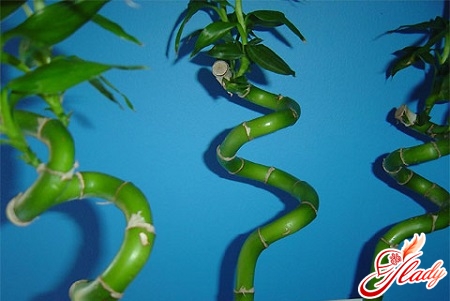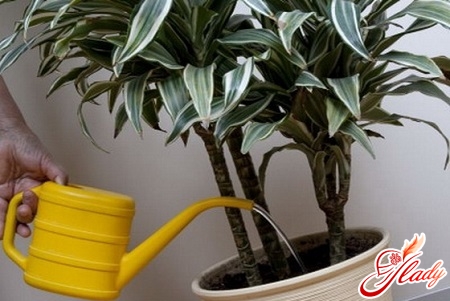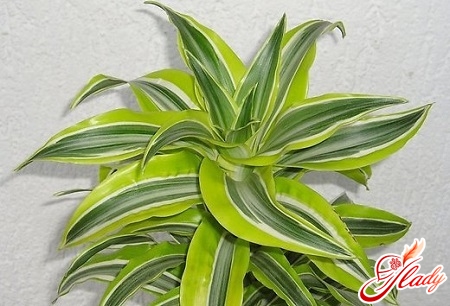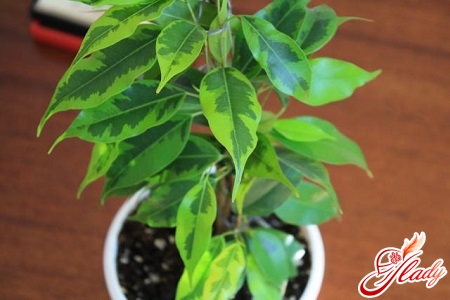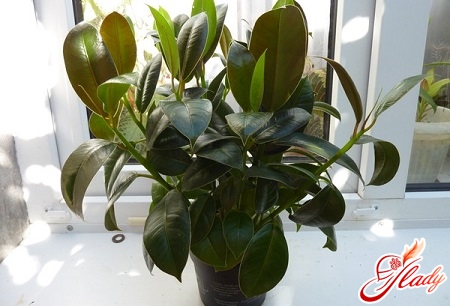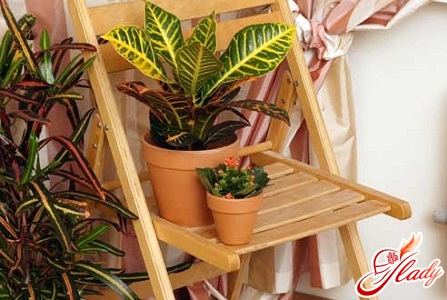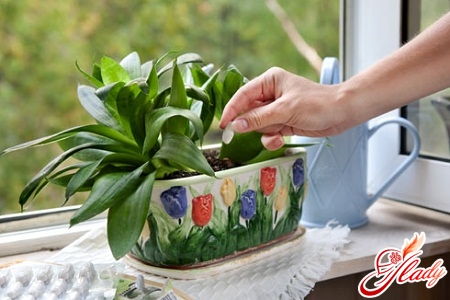 Even in ancient times, people decorated their flowersdwelling and clothing, used various plants as gifts. The history of indoor flowers takes us far into the past, and the evidence is archaeological excavations dating back to three thousand years before our era. And in modern "stone jungle" people do not have enough wildlife. Therefore, many create their own green corners on the windowsills. And the real lovers of indoor plants day after day trying to learn something new about their green pets, learn new plant species, select for each of them a special care. The most dangerous for domestic flowers were and are pests of indoor plants in the soil. They are not so much, but they are capable of damaging the roots of plants, and therefore the flower itself as a whole. After all, if the root is sick, then the part that is above the ground will die in time. And in order to avoid this problem, you need to carefully monitor the quality of the land in which you put the plant, in time to replant it, and noticing that the flower feels bad, the first thing to check is the soil. Almost every flower pot has its own land, which contains all the components necessary for this type. And if you want your flowers for a long time to please you with green leaves and buds, the soil for planting is best purchased in stores. So you minimize the problem of root disease. But, as they say, "who is forewarned is armed", so let's look at the types of pests of domestic plants and figure out how to protect their pets from them. And also learn the methods of fighting harmful insects.
Even in ancient times, people decorated their flowersdwelling and clothing, used various plants as gifts. The history of indoor flowers takes us far into the past, and the evidence is archaeological excavations dating back to three thousand years before our era. And in modern "stone jungle" people do not have enough wildlife. Therefore, many create their own green corners on the windowsills. And the real lovers of indoor plants day after day trying to learn something new about their green pets, learn new plant species, select for each of them a special care. The most dangerous for domestic flowers were and are pests of indoor plants in the soil. They are not so much, but they are capable of damaging the roots of plants, and therefore the flower itself as a whole. After all, if the root is sick, then the part that is above the ground will die in time. And in order to avoid this problem, you need to carefully monitor the quality of the land in which you put the plant, in time to replant it, and noticing that the flower feels bad, the first thing to check is the soil. Almost every flower pot has its own land, which contains all the components necessary for this type. And if you want your flowers for a long time to please you with green leaves and buds, the soil for planting is best purchased in stores. So you minimize the problem of root disease. But, as they say, "who is forewarned is armed", so let's look at the types of pests of domestic plants and figure out how to protect their pets from them. And also learn the methods of fighting harmful insects.
Lycra
This type of insect, although it is related toshrimps and lobsters, but prefers to live in the ground. To be more precise, in moist soil. They do not belong to the most dangerous pests of indoor plants that can be planted in the soil, but it is still necessary to know about them. Mosquitoes prefer wet places and hide in pans of pots. This type of pest has a gray color and a flat body with many legs. Prefer the night time. May damage plants by eating their roots. However, they will not cause great damage to your plant, as the woodworm is easy to detect and destroy by hand. If there are plants in your house that love frequent watering, check regularly the pans of pots, wash them, do not let damp earth accumulate in them. So you will not allow mochrits to multiply and harm your flowers.
Centipedes
This kind of pest of indoor plants,living in the soil, is very diverse. They form a whole zoological class, which includes various insects. Unites them one - eating roots of plants, centipedes do not allow it to develop. Millipedes have a serpentine structure: their body consists of rings, and numerous legs are very difficult to notice, before they are miniature. You can infect the soil with centipedes in two ways. Either you bought a poor-quality land (this also happens), or used to plant the usual soil from the garden. Detect these insects only during transplantation. If you notice them in the ground, be sure to change the substrate completely, even the roots need to be cleaned of the old earth, since it can contain eggs of pests that can in time damage the fresh soil.
Swallowtails
Another name for these jumping insects, similaron fleas - the undercuts. This kind of pest of indoor plants also lives in the ground. Propagation of the moth is very fast, especially in a moist substrate. They feed on decaying plant remains, so they gnaw out small holes on the stems near the ground, less often on the roots. The biggest harm of springtails is brought in the wet season - in autumn, when plant growth stops, and it can not fight for life. If you notice the infection in time, it's easy to get rid of pests. It is necessary to fill the surface of the soil with ashes or with dried sand. Very effective are the so-called, potato traps: the raw potatoes cut in half are laid down on the ground, and afterwards the insects that have climbed there are collected. If the infection is severe, it is necessary to use special solutions for irrigation. Then you need to consult with a specialist in the store. And best of all, carefully wash the pot and sweep the earth completely.
Nematodes
These little worms damage the rootsystem, causing thereby negative changes in the above-ground part of the plant. The leaves of the flower wither and dry up, and on the roots there are swellings. These pests bring potent damage to house plants, it is almost impossible to cure an infected flower. Especially prone to infection are ficuses, cacti, cyclamens. It is good that at home, nematodes are rare, they can be brought only with the earth from the garden. However, if you are going to professionally grow plants in greenhouses for sale, then you should beware of them.
Spider mite
Pests of indoor plants and their controlas diverse as the flowers themselves. Insects can damage not only the roots of plants. Some of their species are dangerous for the above-ground part of the flower. One of these pests is a spider mite. It is dangerous for almost all types of house plants, especially if you take them out on the balcony or yard during the warm season. The presence of the tick can be seen on the web spanned between the leaves. These pests eat leaves from the inside, resulting in the leaves losing color and curling inward. Flower buds, damaged by a tick, can dry out and fall off, and not blooming. The spider mite attacks massively in the hot season, the best prevention against it is maintaining moisture, so spray plants more often. To destroy pests, you need an acaricidal solution, which can be purchased at a specialized store. After treatment, wrap the plant with polyethylene. So you protect other flowers from infection and create a lot of humidity, which will speed up the death of ticks. 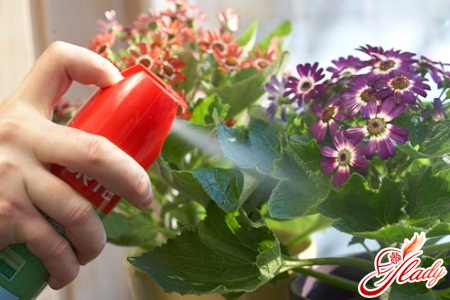
Aphid
Very common pest, but also detectits quite easy. Aphids are dangerous for all types of indoor plants, especially in the summer. Some species of these insects have wings. Floating through open windows, aphids occupy the flower, sucking out the leaves and stems of the juice. Thus, the plant is weakened and ceases to develop. If you found pests on time, it's not difficult to fight them, just rinse the plant with soapy water and then clean it. If the aphids have already settled deeply on the flower, it is treated with special solutions, such as Inta-vir, Karate or Fas. You can also use poisons of vegetable origin: infusion of wormwood or tobacco. Regular treatment will help you avoid the attack of these insects.
Whitewoods
This type of pest is very similar to winged aphids. Whiteflies are very small, about three millimeters. They attack the inside of the leaves and drink juice from them. If the time is not taken, the leaves fade, turn yellow and fall off. Since whiteflies come from tropical countries, their habitat is very warm and moist. The most likely victims of these insects are plants with thin leaves, as well as flowering plants such as azaleas, primulas, hibiscus. A good prevention against whiteflies is airing the room, as well as lowering the temperature. You can treat the plant with insecticide solution: do this once a month. It is advisable not to allow infection of the flower, since it is rather difficult to combat this pest.
Weevils and Caterpillars
These insects have a length of about one and a halfcentimeters and hard wings. Especially dangerous for begonias and azaleas. Eating edges of leaves, weevils cause irreparable harm to the plant, and their larvae feed on roots. These pests attack the flower from two sides, so the plant stops in development, quickly weakens and eventually dies. It is necessary to fight with weevils with the same insecticide. If the infection was severe, then the procedure should be repeated again, about a week later. Everyone knows about these pests. Caterpillars are larvae of butterflies, which feed on foliage of trees and plants. In the garden, on the veranda or on the balcony, your flowers risk becoming food for them. If you do not notice the pests on time, the plants can remain completely without leaves. Fighting caterpillars easily, they just need to be removed by hand and destroyed. However, the prevention of insecticide will be just as effective.
Worms and Shields
This is really a disaster for all roomplants. With them it is rather difficult to fight, because they multiply quickly, replacing for a year several generations. Insects are protected by a shell resembling a mussel shell. Forming stems and leaves of fixed columns, the scabbards suck the juice out of the plant. This category of pests include Australian mealybugs (false ladybugs). They differ from the scales only in that they sometimes move around the plant. At home, the worms get along perfectly well, because for their development the room temperature is optimal. Root cankerbugs, the relatives of mealy, are slightly smaller in size. Live and reproduce in roots. These pests are especially dangerous for plants with dense leaves, highlighting dew, which forms burns. Due to the fact that the scutes and the worms spread very quickly, they can bring irreparable harm to the plant. On the stems there are cracks, leaves turn yellow, then branches die and the flower dies. You can fight these insects in several ways. To begin with, it is necessary to wipe the damaged areas with a solution of alcohol, wait 20 minutes and remove the pests from the plant with a moist cotton swab. Next, you need to spray the flower with an insecticide. The fight against root cuttings requires a plant transplant to a new land. Roots before transplantation should be thoroughly rinsed with running water. And for another three months, water the plant for half a dilute insecticide solution.
Miners and Thrips
Miners are a kind of flies. They lay eggs on the leaves and stems, and their larvae gnaw through there long tunnels. If the larva is small - it just spoils the species of the plant, and when the infection is strong, the flower ceases to grow and develop. Since miners are rare guests in homes and apartments, there is no need to treat plants with poison, just remove the spoiled sheet as soon as you notice the traces left by the miners. Thrips are very small insects, no more than a millimeter in size. The attack of thrips can be confused with the attack of a spider mite, but this pest does not leave a spider web in the plant. Very well reproduce in warm rooms. Despite the fact that the thrips have a pair of tiny wings, they are inactive. Harm not only adults, but also larvae of insects. Drink from the leaves of the plant fluid, which provokes a halt in development, the leaves wither because they lack moisture and air. Buds damaged by this pest are subjected to deformation, they form white spots, and the flower perishes, and not having time to blossom. The thrips do not like the smell of naphthalene, so several of its balls will not interfere with the most vulnerable plant, for example, near the cyclamen or begonias. If the infection does occur, it is necessary to treat the flower with anti-aphids, repeating this procedure in five to six days. You can also spray the plant with infusion of onions or garlic (1 teaspoon per 1 glass of water). Flowers that can not be sprayed are treated as follows: finely chopped garlic is put near the plant and cover the flower along with the "medicine" with polyethylene for two to three hours.
And finally ...
The conclusion from this article can only be one -pests of houseplants are quite numerous, and their appearance is a real nightmare for an inveterate florist. However, this is not as bad as you might think, because effective methods of fighting have already been developed for all of them. And if you catch yourself in time, then the plant will be fully restored, and will continue to please you for a long time. Growing house flowers is a very fascinating hobby. But to achieve a certain success in this occupation will only help knowledge, and, of course, patience. The main thing that a floriculturist should remember is prevention will never hurt. Regularly inspect your pets, check every leaf, every twig. The earlier you find the traces of pests, the easier and faster will be the fight against them. The development and flowering of indoor plants depends only on their host. Treat your flowers as your best friends, understand them, and even talk sometimes. Believe it better than pour fertilizer plants, because they will not help, if there is no proper care, care and love! We advise you to read:




